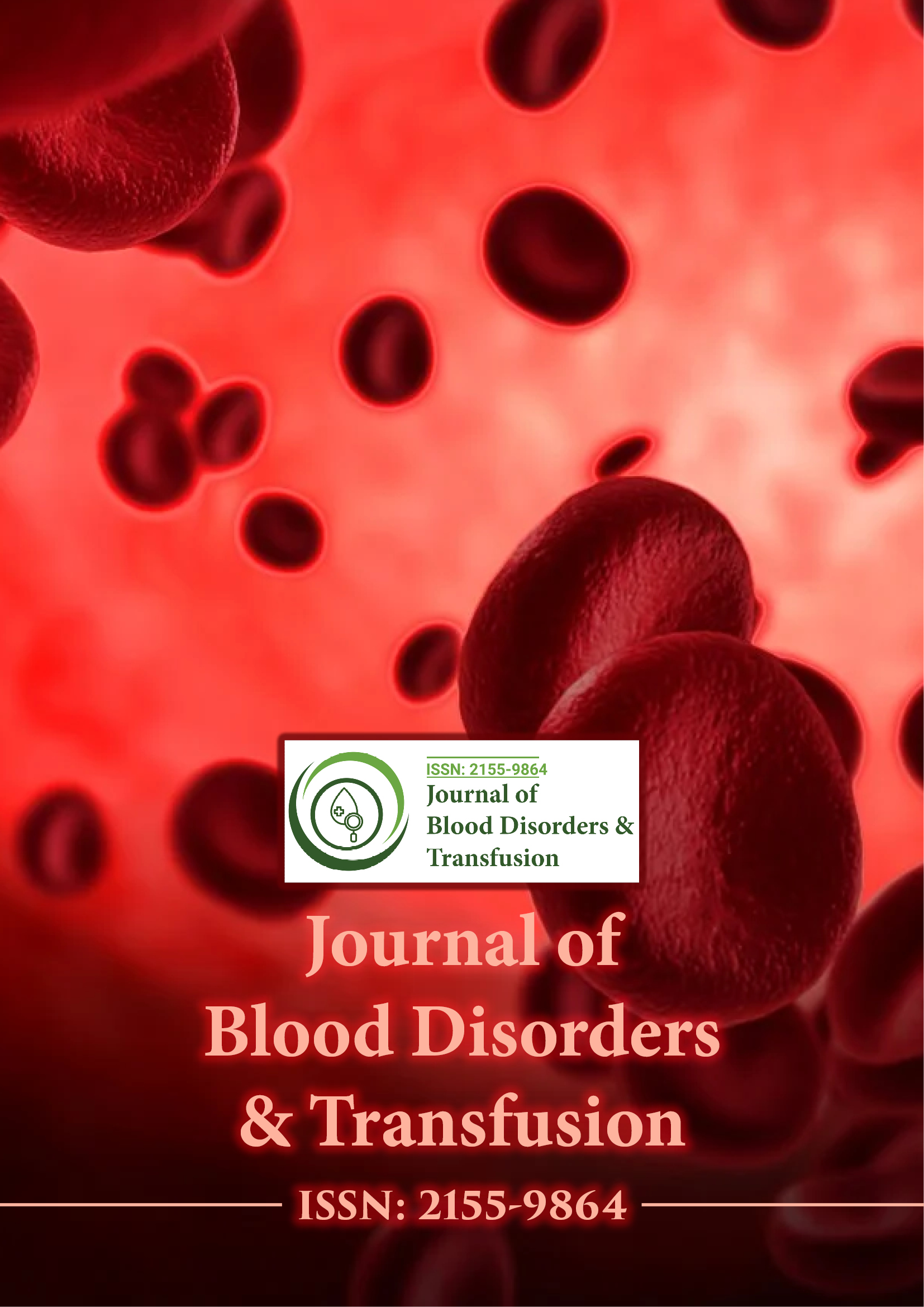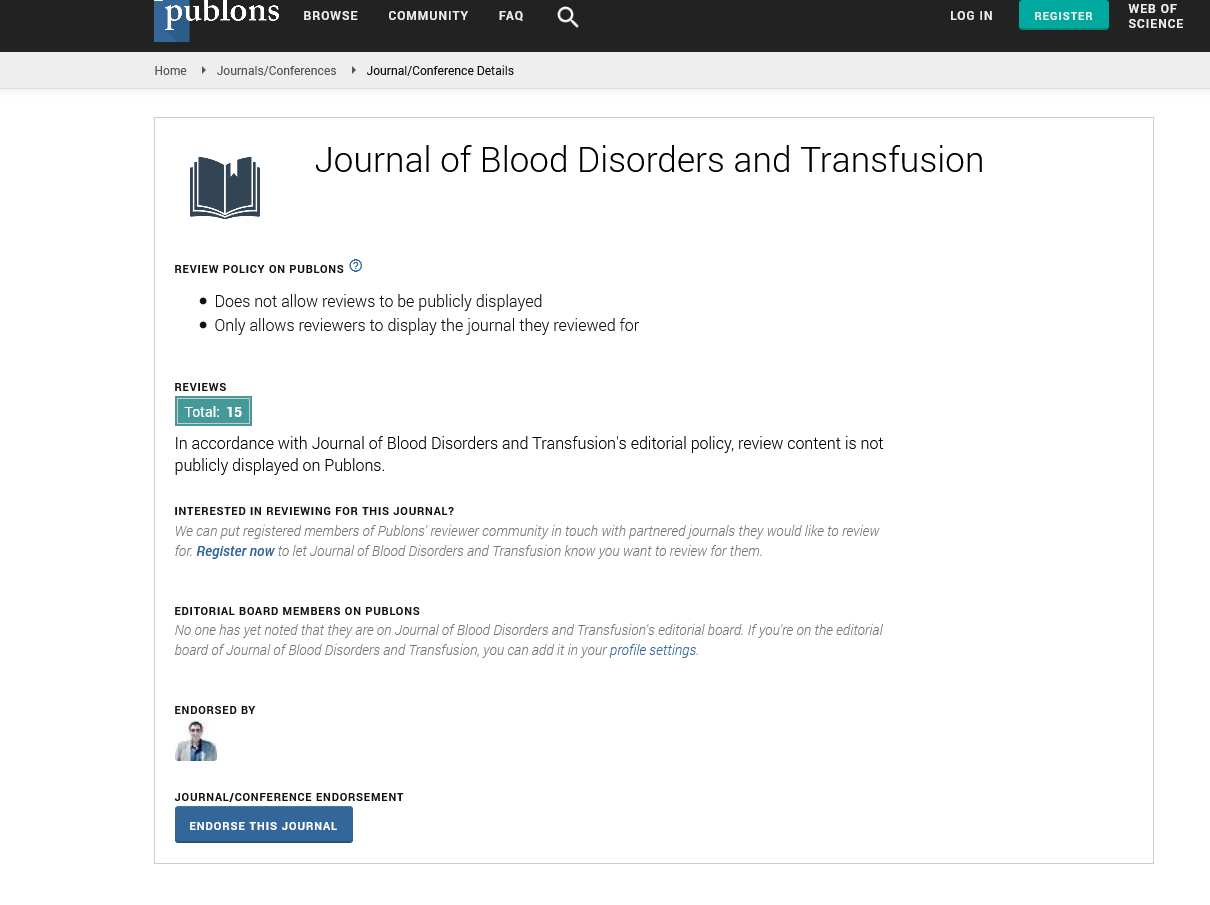Indexed In
- Open J Gate
- Genamics JournalSeek
- JournalTOCs
- Ulrich's Periodicals Directory
- RefSeek
- Hamdard University
- EBSCO A-Z
- OCLC- WorldCat
- Proquest Summons
- Publons
- Geneva Foundation for Medical Education and Research
- Euro Pub
- Google Scholar
Useful Links
Share This Page
Journal Flyer

Open Access Journals
- Agri and Aquaculture
- Biochemistry
- Bioinformatics & Systems Biology
- Business & Management
- Chemistry
- Clinical Sciences
- Engineering
- Food & Nutrition
- General Science
- Genetics & Molecular Biology
- Immunology & Microbiology
- Medical Sciences
- Neuroscience & Psychology
- Nursing & Health Care
- Pharmaceutical Sciences
Pattern of donation and some haematological indices of blood donors in Sokoto, Nigeria
2nd International Conference on Hematology & Blood Disorders
September 29-October 01, 2014 DoubleTree by Hilton Baltimore-BWI Airport, USA
Isaac I Zama, Erhabor O, Abdulrahaman Y, Onuigue F, Buhari H and Ahmed M
Scientific Tracks Abstracts: J Blood Disorders Transf
Abstract:
Introduction: Access to safe and adequate blood and blood product remain a mirage in most settings in Africa thirty years after the first WHO resolution (WHA28.72) to address the issue of universal and equitable access to safe blood as well as effective and rational use of blood and blood products. There is paucity of information on the haematological parameters of blood donors in Sokoto, Nigeria. The present study was, therefore, designed to assess some haematological indices of blood donors using a combination of packed cell volume, total white cell count and platelet count. Method: One hundred and thirty six consecutively recruited whole blood donors, comprising of 108 family replacements, 20 commercial remunerated and 8 voluntary donors, constituted the study population. Three haematological parameters; packed cell volume, total white cell count and platelet count were assessed using standard techniques. Results: We observed a significant difference between the PCV and platelet count between the 3 classes of blood donors. There were no significant differences between the total white counts among the different classes of donors. The values of PCV, total white cell count and platelet count for the voluntary, family replacement and commercial remunerated donors were (40.25?4.46, 9.38?2.00 and 390.23?64.70), (41.02?4.46, 6.37?2.79 , 271.44?109.10) and (28.10?4.15, 5.39?3.44 and 132.50?40.30) respectively. We observed a positive and significant correlation between commercial remunerated blood donation and low PCV (r= 0.68) and platelet count (r=0.72), p=0.01. Family replacement donors constituted a significant number of blood donors (79.41%) compared to (1.71%) and (5.88%) respectively for commercial remunerated and voluntary donors respectively. Conclusion: Despite the resolution by the WHO urging member states to develop national blood transfusion services based on voluntary non- remunerated blood donation, family and commercial remunerated donation still predominate in most settings in Sub Saharan Africa (SSA). The findings from this study indicates that the PCV and platelet count is significantly lower among commercial remunerated donors and re-emphasize the need to formulate policies on ways to seriously and innovatively attract and retain voluntary non-remunerated blood donors. Voluntary non-remunerated blood donors are considered safer than family replacement donors and, in particular, commercial or professional donors. Establishing a panel of regular, voluntary non-remunerated blood donors is therefore the most effective way of ensuring adequate and safe supplies of safe blood and on a continuing basis.

